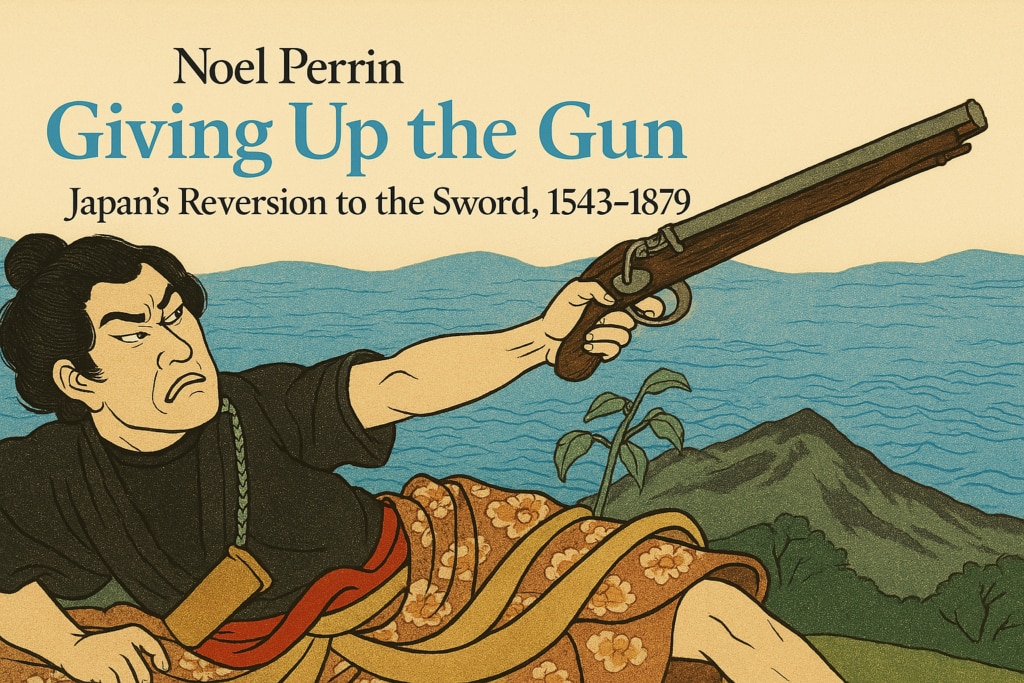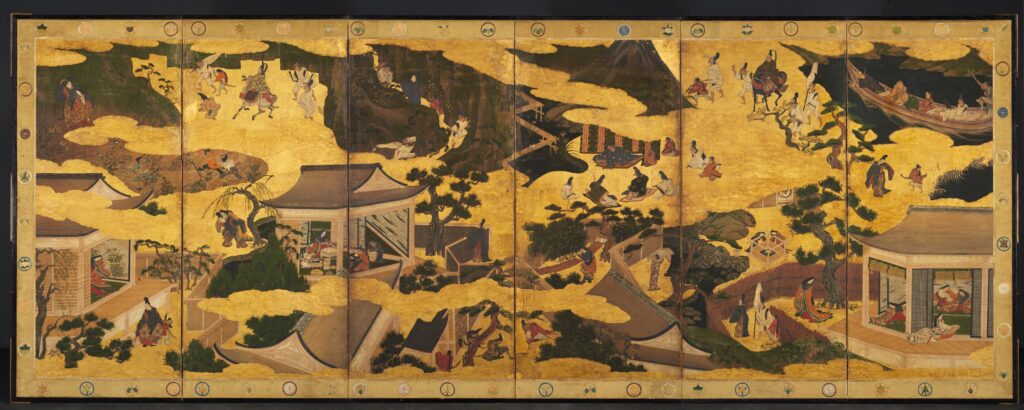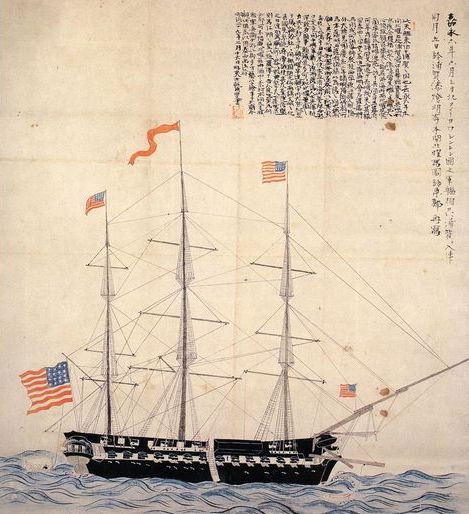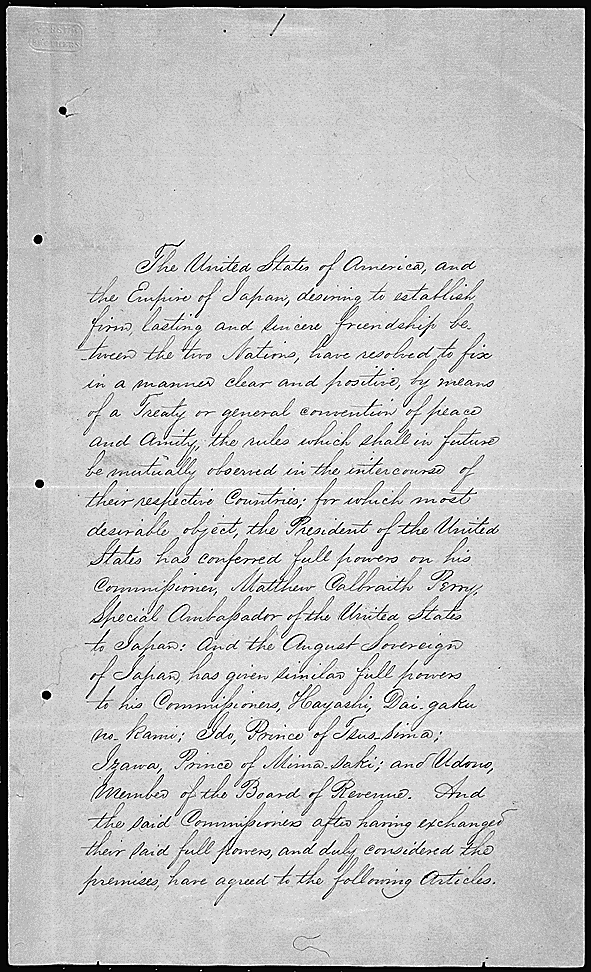Daniyal Mahmood Ahmad, Al Hakam

Towards the end of the 16th century, during the Sengoku (warring states) period, Japan had more guns per capita than most European nations. But less than 100 years later, Japan had almost entirely given up the gun in favour of reverting back to the sword and other traditional weapons such as the bow and arrow.
What led to such a rapid arms race followed by an even more rapid demilitarisation is what Noel Perrin describes in his book, a thought-provoking historical study titled “Giving up the gun: Japan’s reversion to the sword, 1543-1879”, originally published in 1979.
Warring States and the introduction of the gun
The Sengoku period lasted from 1467-1603, during which Japan’s central authority was greatly diminished and fractured, leading to various Daimyo (lords and vassals of the Shogun – military leader of Japan) vying for control.
Lord Oda Nobunaga was one of the most famous of these Daimyo, and since the introduction of the tanegashima (matchlock gun) to Japanese society by the Portuguese in the 16th century, he was amongst those who not only adopted this new type of weapon, but heavily relied on it leading to his allied victory with Tokugawa Ieyasu over Takeda Katsuyori’s forces at the battle of Nagashino in 1575.
Despite this reliance on firearms, and its continued success on the battlefield – not just at home but during foreign invasions into Korea in the 1590s as well – sentiments towards guns shifted in Japanese society.
Preservation of samurai culture
Perrin describes the usual method of Japanese warfare: a fully armoured Samurai, wearing two swords, would ride up in front of his army and meet a rival samurai for a duel before the general skirmish began. In this duel, they would begin by introducing themselves, after which they would fight each other to an honourable death.
The armour which these Samurai donned themselves in was meticulously crafted and often personalised. A high-ranking Samurai might have massive deer antlers on his helmet as a sign of prestige, an example of which can be seen in one of the centuries-old paintings presented in the book.
Samurai swords, or as they are known in Japanese – Katana – were of equal, if not more importance than the armour. The importance of wearing a sword at one’s waist might be comparable to the significance given to this same act by the pre-Islamic Arabs of Jahiliyyah (period of ignorance). Japanese warriors weren’t decorated with medals or other embellishments on their uniform – it was their sword, specifically the hilt, which would be decorated to show one’s veteran status.
With such an emphasis on Samurai culture, adopting the gun became an uneasy, and sometimes even an ugly compromise. At first, the Japanese thought that they had found the solution by only arming peasants and low-ranking soldiers with guns, so that the unaesthetic and ignoble act of shooting someone from a distance wouldn’t tarnish the reputation and honour of a Samurai.
Desire for stability and control
Eventually, when the Tokugawa shogunate sought to consolidate its control of the country after the chaotic centuries of the Sengoku period and maintain a stable and hierarchical society for a more peaceful future, firearms production and ownership were limited and the general population was encouraged (though it was more of a decree, not to be ignored) to donate their guns for noble religious endeavours such as the construction of a massive metal statue of the Buddha. Taking the gun out of the hands of ordinary citizens lessened the risk of rebellions and uprisings.
Even large-scale production for the national army was constricted, seeing as the Tokugawa shogunate was transitioning Japan from a time of war to an era of peace, as firearms were definitely seen as a tool of war. This was supplemented by the absence of external threats, lessening the need for advanced military technology for the time being.
Sakoku (isolationist policy) & Traditionalism

The Tokugawa shogunate also implemented the policy of Sakoku (isolationism), restricting foreign contact, trade and immigration. One of the main reasons for this was to stop the infiltration and spread of Christianity through Jesuit missionaries.
The natural result of this policy was a reduced influence of firearms and gunpowder on Japanese society due to their limited import, reinforcing the preference for traditional weapons.
Traditional weapons were far more aligned with Japanese aesthetic and philosophical traditions anyway, which valued harmony, craftsmanship and the beauty of these weapons. To the Japanese, the contrast between the noble and honourable sword with the crude and dishonourable gun was stark.
Economic factors
Another major factor was, simply, money. Producing and maintaining firearms and gunpowder were an expensive endeavour, and one that was only necessary during war. During peacetime, this economic expenditure made no sense to the rulers of the country. Mass producing firearms greatly diminished when wars were no longer common, so it only made sense to revert to the sword and bow, which cost a lot less to produce and maintain.
Europe’s stark contrast
The Edo period (1603-1868) – during which the Tokugawa shogunate ruled Japan – was one of the most peaceful and prosperous periods of Japanese history, depending on the metrics that one measures prosperity in.
The author presents eyewitness accounts of contemporary Europeans visiting Japan during this period, and rather than finding an uncivilised and barbaric society, as per their expectations, they found the complete opposite. One such contemporary, General Edward Barrington de Fonblanque, RA, wrote in 1861:
“It is not true that we resort to Japan to civilize, for civilization exists already; or to convert the heathen, for such attempts are strictly forbidden under the terms of the treaty which we have accepted; or to add to the happiness of the people, for a more contented people does not exist […]”
Edward S Morse, Professor of Zoology at the Imperial University, Tokyo. wrote in 1877:
“A foreigner, after remaining a few months in Japan, slowly begins to realize that, whereas he thought he could teach the Japanese everything, he finds to his amazement and chagrin, that those virtues or attributes which under the name of humanity are the burden of our moral teaching at home, the Japanese seem to have been born with.”
This, along with much more praise by many others, illustrates a society that is content with its way of life, despite the regression in technological advancements in the military sector.
Europeans would find, to their amazement, that diseases like typhoid, amongst others, didn’t exist in Japan at all. This was attributed to their cleanliness and hygiene. They seemed like a civilised society, in stark contrast to the Europeans, like the Germans, for example, who, in the 16th century, through the use of guns and spread of disease due to the lack of hygiene practices, decimated their population from 20 million down to 12 million. They went further in their comparable barbarity; as the Germans are reported to have practiced cannibalism during this time, only a few centuries before our modern era.
The guns that begot guns

This period of relative peace was abruptly disturbed on one fateful day, 8 July 1853, when the American Commodore Perry arrived at Japan’s harbour with a fleet of ships brandishing the biggest and most powerful guns (in the form of cannons) that the Japanese had seen.
This resulted in the signing of the Treaty of Kanagawa, forcing the country to open up its ports and borders for trade and diplomatic relations, ending over 200 years of Japan’s isolationist policy.

It was at this moment that the Japanese realised that their outlook on firearms had now become outdated. They now needed to begin manufacturing and arming themselves with guns if they were to have a chance at keeping their sovereignty in the coming era.
An interesting parallel can be drawn between this realisation and the destruction that the Japanese people experienced from the Nuclear bombs dropped by the USA in World War II. In light of this, Hazrat Musleh-e-Maudra, the Second Khalifa of the Ahmadiyya Muslim Community, encouraged Muslim countries to arm themselves with nuclear weapons as well, as a deterrence, so that they wouldn’t face a similar fate to the Japanese. (Khutbat-e-Mahmud, Vol. 26, p. 318)
The author’s conclusion
In light of all the information presented in this book, the author concludes that Japan proved to the world that technological advancements and progress can not only be halted but, in the right circumstances, even reversed. The benefit of this is clear to the author, as it led to generations of peace, only to be broken by the reintroduction of guns.
This not only brought violence, death, and destruction, culminating in Japan’s participation in both World Wars, but it also resulted in an increase in pollution due to rapid industrialisation and a noticeable decrease in the general contentment and happiness of the ordinary people of Japan.
The author argues that reversing some advancements does not necessarily mean that the country stops progressing altogether. He points out that Japan made large leaps forward in many sectors. For example, Tokyo was supplied with clean drinking water by an Aqueduct in the 1640s, whereas New York only saw its first aqueduct 200 years later.
This progress, he explains, seemed to be more in line with human nature due to its gradual pace, as opposed to the shock of the Industrial Revolution on the human psyche. This can be deduced from the difference in the temperaments of the Japanese citizens from both periods.
Perrin’s viewpoint on this entire topic is perfectly summarised in his own words at the end of the book:
“[…] This is to talk as if progress – however one defines that elusive concept – were something semidivine, an inexorable force outside human control. And of course, it isn’t. It is something we can guide, and direct, and even stop. Men can choose to remember; they can also choose to forget. As men did on Tanegashima.” (Noel Perrin, Giving up the gun: Japan’s reversion to the sword, 1543-1879, p. 92)

